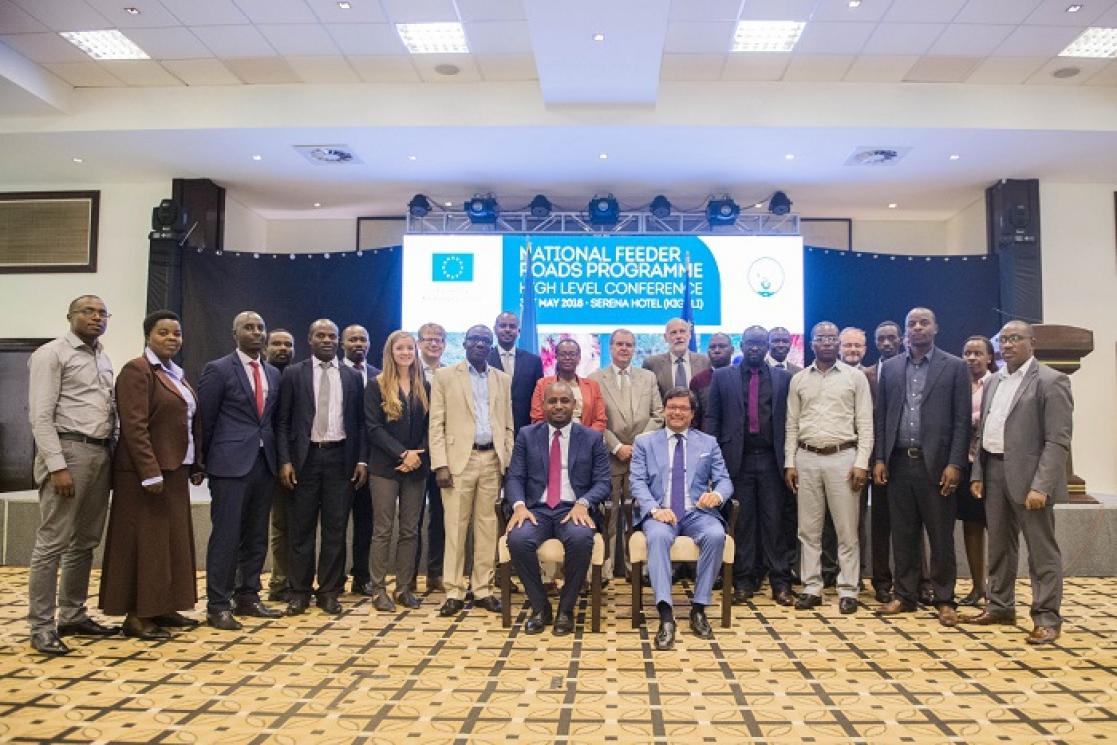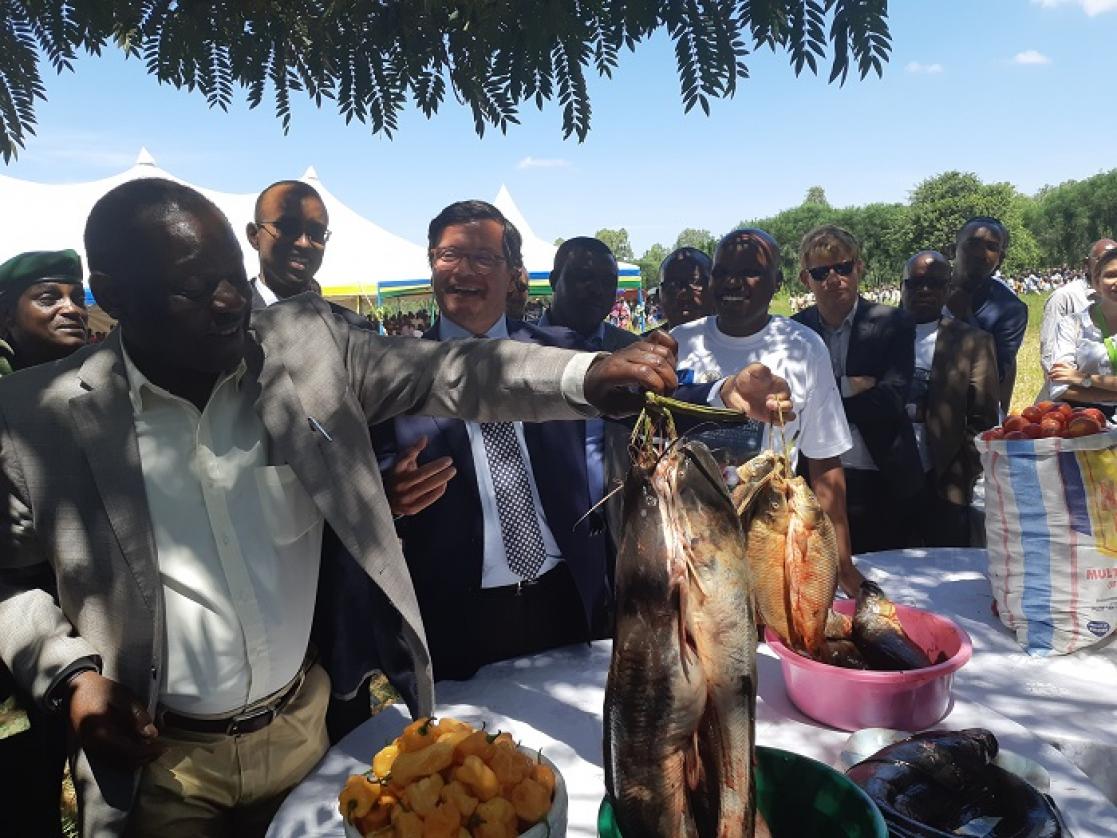EU celebrates successful completion of National Feeder Road Programme

During the field visit, Ambassador Nicola Bellomo, recently appointed as the new Ambassador of the European Union to Rwanda, inaugurated Nzangwa-Nyiragiseke-Mugina-Gasenyi road, 12.67 km in Bugesera District, Rweru Sector together with the Minister of State of Agriculture Fulgence Nsengiyumva.

The following day, Ambassador Bellomo opened a High Level Conference together with the Minister of State of Transport Jean de Dieu Uwihanganye.
Since the formulation of the Feeder Road Programme by the Rwandan Government in 2012, a lot of progress has been made in construction and maintenance of feeder roads and in the organisation of the feeder road sector. The Ministry of Agriculture and Animal Resources (MINAGRI) was given by then the mandate of implementing the National Rural Feeder Roads Program (RFRP) and EU supported 7 Districts of the Programme (Bugesera,Ngoma, Huye, Muhanga, Ngororero, Rubavu and Rulindo) through a Financing Agreement of 40,000,000 EUR (of which 3,650,000 of Technical Cooperation) signed on 04th October 2013.
With 4 consecutive successfully and entirely paid disbursements, out of the target of 700 Km, 799.5 km of rural feeder roads were rehabilitated, and 514.27 km of rural feeder roads were maintained, out of the target of 500 Km.
In terms of capacity building, the programme inspired the creation of a rural feeder roads coordination unit in Minagri and the deployment and training of District Engineers under the National Road Agency RTDA to 7 Districts (with a role of monitoring the works and ensuring a regular road inventory and condition assessments of the feeder roads).
All the Districts of Rwanda benefitted from trainings provided by the programme. The trainings targeted Ministry staff, District staff and private sector reinforcing capacities on rehabilitation and maintenance of unpaved roads, on procurement of works, on labour intensive approach and on technical supervision. The Programme was also instrumental in the preparation of the feeder road official standards and for preparation of the HIMO (labour intensive) guidelines. It also contributed to the elaboration of the new National Feeder Roads Policy and Strategy. Additionally, Feeder Roads Rehabilitation and Maintenance manuals were produced and adopted under the support of the EU and will be distributed to the attendees of the Conference.
In 2012, 1000 km of unpaved roads were in poor condition and not always accessible during the rainy season. The situation today has significantly improved with a total of 1824 km of roads paved and more than 2.000 km newly rehabilitated and all-weather unpaved roads.
The EU is now handing over the support to the sector to other donors, in particular to a Multi donor Trust Fund (MDTF) through which the World Bank is now administering Netherlands and USAID funds for a total of 68 M USD. The joint targets from the MDTF are a total of 450km of Feeder Roads to be rehabilitated in six districts. Despite the support and the fact that the Government has also contributed largely to the budget of the sector, more support would be necessary in order to cover the full network of unpaved roads according to the ambitious targets of the new Feeder Road Policy and Strategy. Rwanda has an existing estimated network of about 14.000 Km of main roads without considering very small unclassified rural roads.
Last year, the Government formulated and approved a new Feeder Road Policy and Strategy, with the objective of bringing a road to within 2 kilometres of each farm in Rwanda by 2028. This will require the establishment of a total network estimated at 30,000 km. Recently, an Organisational Capacity Assessment (OCA) was conducted under the support of EU, with the aim of streamlining the institutional organisation of the feeder road sector in view of the implementation of the ambitious Policy and Strategy. The OCA final report and action plan were approved in January 2018.
With the aim of celebrating and reviewing the recent achievements but also of informing and sensitizing stakeholders and a wider audience on the challenges ahead, a High Level Conference took place on May 31st at the Serena Hotel in Kigali. On the eve of the Conference, on May 30th a field visit was organised to inaugurate a road in Bugesera, a District which benefited from EU support.


In relation to the infrastructure sector, the support of the EU to the Rwanda Government dates back to more than 20 years with several projects successfully implemented. These include the rehabilitation of the Kigali –Gatuna Road, several paved roads in the Kigali urban area, the rehabilitation of Kigali International Airport, the rehabilitation of the Gitarama-Butare-Akanyaru road, the rehabilitation of Kigali - Kayonza road and Kigali – Gitarama road. The support of EU also included the construction of the Parliament buildings, the Supreme Court, the Office of the Prosecutor General, The Ministry of Finance and Economic Planning and several court houses and health centres.
